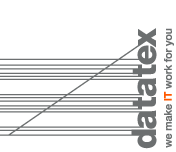
ERP solutions for the textile industry in Italy
Interview with CLAUDIO MEANI – Datatex Head of Business Development EMEA

As Italian man and EMEA Sales Director (Europe, Middle East, Africa) at Datatex, the international leading supplier of ERP solutions for the textile world, with your thirty-year experience in this sector, what can you say about the evolution of the textile industry in Italy, from an IT point of view? And how has Datatex evolved to support in the best possible way textile companies?
In the 70s and 80s, there wasn’t a strong IT culture, and the ERP world was still in a pioneering phase from different points of view, in particular:
- From a product and competition point of view, namely: there were very few software houses and standard products were missing, so we essentially were developers of programs and IT solutions on request of textile companies that contacted us. Generally, our sales agents didn’t have to look for customers, the companies called us directly asking to introduce single functions and specific answers to localized issues. We perfectly responded to what they were asking, and the customer was always satisfied.
- From the point of view of IT company’s needs: Italian textile companies had fewer needs than, both because the supply chain was shorter, the world was less globalized, so it was very rare to have a company branch abroad, and also because we were living in a pre-web era (there were no company’s portals, e-commerce platforms, customer portal, etc…). Hence, they simply needed external informatics management, sometimes not easy to implement but with no further needs.
Then, as we know, the world has rapidly evolved and changed, on one hand (point 1) for the increase of competition and for the birth of a standard ERP, able to perfectly manage the basic company’s needs, on the other hand (point 2) for the impressive growth of IT needs in the textile world, a growth linked both to the opening of overseas offices, and for the introduction of the web with the digitalization of companies, and for the growing connections within the textile supply chain.
Hence, it is clear that today a software house for textile cannot only be a center for the development of programs at the request of the customer, but it has to become a consultancy strategic reference point for the business organization.
Therefore, today Datatex has an increasingly active and proactive role with regard to the customer’s needs. Our technicians – that speak perfectly the textile language and have in-depths sector knowledge – suggest solutions and elaborate IT technologies, in a constant dialogue with the client textile company.
In the light of these considerations, a fact seems evident to me: Datatex has textile customers in 45 countries and owns the best-selling vertical management software in the world (NOW ERP). This solution is a preferred reference point for a textile company, to international but generic ERP solutions.
Which are historically, Datatex projects in Italy that for importance and innovation rate, deserve a special mention and emphasis?
It is always difficult to answer this kind of question, because for me all Datatex customers in Italy and worldwide, have been and still are equally meaningful.
That said, and taking into account that in Italy alone there are more than one hundred textile industries which adopted Datatex ERP, if we look at the worldwide known Italian textile companies, all with an Italian heart but with an international spirit, I’d like to quote three recently acquired customers: Klopman (European leading company in the production of fabrics for working garments, headquartered in Frosinone (Rome) and with other branches in France and Indonesia); Carvico (big company from Bergamo, the international leader in the field of elastic fabrics that owns the brands Carvico, Jersey, Lomellina, Eurojersey, CArvico Ethiopia and Hung Yen – Vietnam); Imprima (the multinational company leader in the field of textile printing and finishing, with legal head office in Milan, Italian production plants in Bulagarograsso and Lonate Pozzole, and branches in Italy, Germany, USA, China, Brazile, and Morocco).
Among Datatex historical customers in Italy, I’m pleased to mention also other high profile textile companies, excellent industries with which we have been working very well for years, such as Clerici Tessuto (leading reality in the textile sector in Como with an industrial estate of more than 10.000 sqm in Grandate, a printing house, a dyeing plant and foreign commercial branches in Paris and New York), Marchi & Fildi (textile group headquartered in Biella, with plants also in Germany and Turkey, and with a leadership position in the spinning world), Botto Giuseppe (historical and famous textile company from Biella, founded in 1896); Berto (a leading company in denim fabric production from Veneto); Olimpias (textile manufacturer of Benetton Group); Trerè Innovation (a leading company in high-tech clothing from Mantua); and Lanificio Cangioli (important textile company from Prato, founded in 1859).
Last but not least we must not forget that Datatex has also small-sized customers with less than twenty users: Datatex ERP is highly scalable and perfectly works in textile companies of any size. Among these Italian manufacturing excellences, with local dimensions but with a high product and service quality, I can quote four examples: Tintoria Comacina (company specialized in dying services of textiles, headquartered in Senna Comasco); Fattorseta (another historical company in Como textile district, that produces and distributes textile accessorizes for women); Finelvo (excellence in the textile district of Biella, specialized in the production of technical and flocked yarns for automotive); Texital (elegant textile company from Bergamo which produces furnishing fabrics).
The difficult situation caused by the pandemic had an important impact on Italian textile. How did the sector react to the Covid? What can textile companies do to face and overcome this emergency?
We know that the impact of Covid has been very hard on Italian textile companies, with incomes that have declined on average (in 2020 compared to 2019) by 30%, with a good hold for technical and furnishing fabrics, and with decreases of the 50% for apparel fabrics.
Despite that, at Datatex we never had breaks, and this was possible because in Italy we have very smart and farsighted customers. After all, it is well known that Italians, in front of difficult periods, always manage to find a way to rise again. Many Italian textile companies understood that the world was about to change, and they took advantage of this moment of “break” to make their organization and their IT system more efficient. Hence, they asked us to implement new solutions to improve their links with the textile supply chain, and they have also urged us to introduce new and performing tools, increasingly user-friendly and technologically advanced.
How do you imagine the Italian textile industry in the near future? How could it evolve in the next years to be more competitive at a global level?
The delocalization level driven by production activities in extra European areas, and in particular in Asia, is a phenomenon that until recently was taken for granted by European companies, but today many businessmen are realizing that this is a model with many weaknesses, both in textile and in other sectors.
The pandemic – first with face masks and then with vaccines – showed in a striking way that an almost total dependence on imports from extra European countries may become – in difficult and unexpected periods – a serious problem. The same applies to the textile sector. The main point is not to stop producing or importing products from China, the point is that it takes common sense: it’s one thing to be 20% dependent on imports from Asia, which is fine, but it’s another to be 80% dependent on such imports.
The alternative is not the creation of isolated markets in Italy, France, or Germany…this will not lead anywhere. The real option is to have a new and wide European industrial politic (not only economic and financial!), for the grand return of a European textile supply chain. There are already the first signals that lead in this direction, and I believe that the evolution will follow this path in the near future: less textile delocalization outside Europe, and a strong return of textile production within the borders of the European Union.

